Day 3 — Tuesday, Nov. 7
All times are Central Standard Time.
Display Preferences
Hide/Show
8:20 a.m.–9:00 a.m. | Delta Ballroom A | General
Flag Folding Ceremony
Joe Buhain, EdD, MBA, RRT, FAARC
Michael de Peralta, MBA-HCM, RRT, RCP
Felix Samson Gregorian, MScRTL, RRT, RCP
Harry Roman, MA, RRT, FAARC
Wadie Williams, MS, RRT, FAARC
Show description
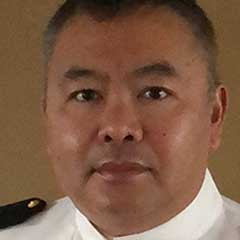
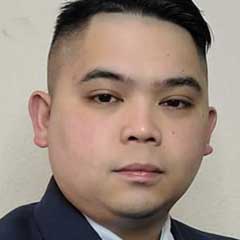
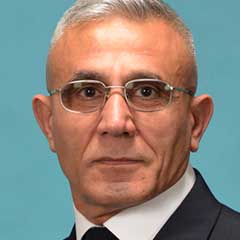
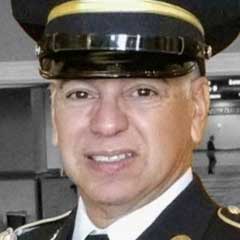
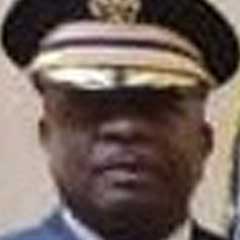
An AARC tradition like no other, attend the AARC Flag Folding Ceremony and celebrate the rich tradition of the U.S. Military and Armed Forces. RT veterans and active-duty respiratory therapists conduct a moving ceremony as we recognize those who serve, those who have served, and those we have lost.
9:10 a.m.–11:10 a.m. | Presidential A | General
Open Forum Editors’ Choice
Show description
Researchers present the result of their work using a short PowerPoint presentation, followed by questions from the attendees.
Supported by an unrestricted educational grant from
9:10 a.m.–10:30 a.m.
Symposium
Clinical Practice Guidelines Update
9:10 a.m.–9:45 a.m. | Delta Ballroom B | Adult Acute Care
Patient-Ventilator Assessment
Lynda Goodfellow, EdD, RRT, FAARC
Show description
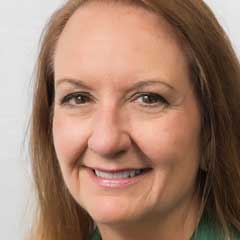
The Patient Ventilator Assessment (PVA) is important for the respiratory therapist in caring for patients receiving mechanical ventilation. The CPG panel members reviewed the evidence that included the appropriateness of alarms, artificial interfaces/airways, humidification, resource allocation, telemedicine, lung protective strategies, desynchrony, and ventilator liberation. Recommendations and practical use in the acute care setting and the home will be discussed.
9:55 a.m.–10:30 a.m. | Delta Ballroom B | Adult Acute Care
Spontaneous Breathing Trials
Karsten Roberts, MSc, RRT, FAARC
Show description

Spontaneous breathing trials (SBTs) are used for assessing the discontinuation of ventilatory support. The withdrawal process or liberation from mechanical ventilation is an important clinical issue. The CPG panel members reviewed the evidence that included the rapid shallow breathing index, the use of pressure support, the timing of SBT assessments, and the effect of increased oxygen during the SBT. Recommendations and discussion of evidence will be reviewed.
9:10 a.m.–9:45 a.m. | Delta Ballroom C | Post Acute Care
Chronic Critical Illness: Weaning from Ventilatory Support (The Ventilator)
Craig Rackley, MD, FCCP
Show description
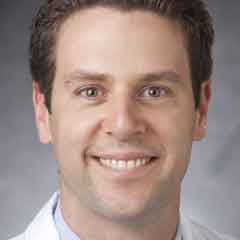
Chronic critical illness affects a significant number of patients following their acute illness. Many of these patients require long term recovery, often needing mechanical ventilation and tracheostomy. Respiratory care professionals play an integral role in this recovery process. This session will focus on the use of long-term acute care hospitals in this process and using a best practices approach for management of patients requiring prolonged mechanical ventilation with emphasis on weaning techniques.
9:10 a.m.–9:45 a.m. | Washington B | Diagnostics/PFT
2023 ERS ATS Lung Volume Technical Standard Update
Carl Mottram, RRT, RPFT, FAARC
Show description

The ERS-ATS Lung Volume Technical Standards include a variety of processes that need to be understood by the lung function testing community. We will review the updated testing requirements and how to implement them into your PF laboratories testing and quality control processes.
Sponsored by
9:10 a.m.–10:30
Symposium
Developing a Patient Safety Culture using Human Factors Implementation
9:10 a.m.–9:45 a.m. | Delta Ballroom D | Patient Safety
What is Human Factors Engineering?
Cheryl Dominick, MHA/E, RRT, RRT-NPS
Show description

Human Factors Engineering (HFE) is defined as the study of humans and their interaction with the tools they use and their environment. The goal of using tools derived from the HFE conceptual model, such as the Systems Engineering Initiative for Patient Safety, is to assess the system, processes, and outcomes in a health care environment. Looking at a system through an HFE lens enables clinicians to identify key opportunities for reducing variability, cognitive workload, and medical errors.
9:55 a.m.–10:30 a.m. | Delta Ballroom D | Patient Safety
Implementing Human Factors Tools in an RT Department
Emily Simmons, MHS, RRT, RRT-NPS, CPHQ
Show description

Patient safety is at the forefront of every health care organization, and respiratory therapists are responsible for building a strong patient safety culture in the care they deliver at the bedside. By using a human factors macro-assessment and root-cause analysis, perspective is gained on simple changes that can be made at the departmental level to improve overall patient safety. Examples relevant to respiratory therapists will be discussed.
9:10 a.m.–9:45 a.m. | Canal AB | Sleep
Technology Driven Change and Your Sleep Disorders Center
Peter Allen, BSRC, RPSGT, FAAST
Show description

New technology is changing the delivery of services for sleep disorders centers across the U, S. This lecture will focus on that technology and show how it is rapidly changing sleep lab business models. The evidence-based medicine impact, combined with innovations like implants, wearables, and artificial intelligence, will be covered. Helping you adapt to the diagnostic and treatment challenges for your lab is the speaker's goal.
9:55 a.m.–10:30 a.m. | Delta Ballroom C | Post Acute Care
Chronic Critical Illness: Weaning from Ventilatory Support (The Tracheostomy)
Samuel Hammerman, MD, MMM
Show description
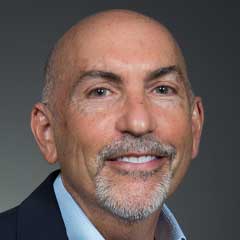
Chronic respiratory failure affects a significant number of patients following their acute illness. Many of these patients require long term recovery and often require a tracheostomy. Respiratory care professionals play an integral role in this recovery process. This session will focus on the use of long-term acute care hospitals in this process with best practices for management of a patient with a tracheostomy.
9:55 a.m.–10:30 a.m. | Canal AB | Sleep
Home Sleep Apnea Testing: 2023 Updates
Charles Atwood, MD
Show description

At the completion of this session, the learner will be able to list three scenarios in which home sleep apnea testing can be useful to assist in the diagnosis of sleep disordered breathing.
9:55 a.m.–10:30 a.m. | Washington B | Diagnostics/PFT
What’s New? An Overview of New and Emerging Respiratory Diagnostic Tests
Michael Davis, PhD, RRT, FAARC
Show description
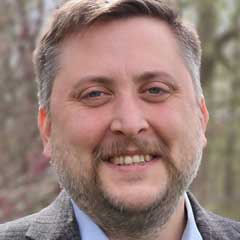
This presentation will provide an overview of recently approved and emerging respiratory diagnostic tests. The role of respiratory therapists in utilizing these techniques will be emphasized, as will novel non- and minimally invasive tests. Novel applications of existing respiratory diagnostic tests will also be discussed. Fields of testing that will be covered include nasal sampling, bronchoscopic assays, exhaled biomarkers, indicators of pulmonary function, and monitors of oxidative stress.
10:40 a.m.–11:15 a.m. | Delta Ballroom B | Adult Acute Care
One SpO2 Target Does Not Fit All. A Plea for Adapted SpO2 Targets
Francois Lellouche, MD PhD
Show description
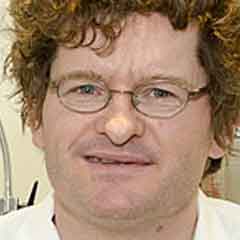
The search for the optimal oxygenation target is difficult. While it is accepted that hypoxemia and hyperoxemia should be avoided, the minimal and maximum oxygenation saturation boundaries are difficult to determine. During this lecture, the speaker will present evidence suggesting a new way to target SpO2 values.
10:40 a.m.–11:15 a.m. | Delta Ballroom C | Post Acute Care
Providing Value: Evidence Based Practices for Chronic Disease Management
Krystal Craddock, MSRC, RRT, CCM
Show description

Value-based care in respiratory encompasses helping patients limit the negative effects of chronic pulmonary disease and live healthier lives, utilizing evidence-based practice. From home NIPPV to oxygen, this lecture will review the evidence of use in chronic disease and provide guidance on how bedside RTs and RT Case Managers can make recommendations based on the patients’ needs and what is necessary to access this equipment to support safe disease management at home. We will also review insurance authorization requirements and the necessary diagnostic criteria to gain access to home equipment!
10:40 a.m.–11:15 a.m. | Washington B | Diagnostics/PFT
Pulmonary Function Testing: How I Do It?
Ralph Stumbo, RRT, CPFT, FAARC
Show description

There is often misunderstanding regarding the performance of various types of pulmonary function testing/quality assurance. HSAT is one such pulmonary function test. This talk will focus on “how I do it approach” to HSAT testing.
10:40 a.m.–11:15 a.m. | Delta Ballroom D | Neonatal/Pediatrics
Cardiopulmonary Interactions during Pediatric ECMO for the Bedside RT
Omar Alibrahim, MD, FAAP
Show description

Extracorporeal membrane oxygenation (ECMO) is a lifesaving intervention for severe respiratory or cardiac failure. The cardiopulmonary interactions between ECMO and mechanical ventilation are complex and respiratory therapists should have an understanding of these intricacies to balance oxygenation and ventilation status. This lecture will cover how ECMO, both veno-arterial and veno-venous, will interact with mechanical ventilator management.
10:40 a.m.–11:15 a.m. | Canal AB | Sleep
Detection and Treatment of Sleep Disorders in the Hospitalized Patient
Jessica Schweller, MS, APRN-CNP, RRT, RRT-SDS
Amanda Leightner, RRT, RRT-SDS, RPSGT
Show description
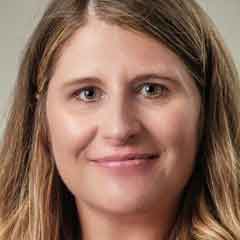

The respiratory therapist is at the frontline of care for patients hospitalized with a variety of illnesses. Many of these patients have various types of sleep disorders (OSA, CSA, insomnia, restless leg syndrome, narcolepsy) and these disorders are often missed by the team caring for the patient. This session will review the various types of sleep disorders and methods the RT can use to detect and assist in the management of such patients.
11:25 a.m.–12:00 p.m. | Delta Ballroom B | Adult Acute Care
Unconventional Approach to Address Ventilator Asynchrony/Weaning in COPD
Laura Reindl, MS, RRT, RRT-ACCS, RRT-NPS
Show description


Patient ventilator asynchrony (PVA), especially in COPD patients, can be underestimated and contribute to the inability to wean from mechanical ventilation. Utilization of Neurally Adjusted Ventilatory Assist (NAVA) as a monitoring tool can equip the RT with strategies for early identification and mitigation of problematic asynchronies. The pros and cons of NAVA will be presented, as well as an evidence-based review of alternative strategies to address PVA in this patient population.
11:25 a.m.–12:00 p.m. | Delta Ballroom C | Post Acute Care
Artificial Intelligence/Remote Patient Monitoring of Chronic Lung Patients
Kim Bennion, MsHS, RRT, CHC, FAARC
Show description
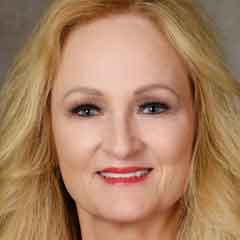
Innovation in health care has never been more needed. Integration of artificial intelligence and remote patient monitoring are two innovative processes that are being used to provide more personalized care for patients with COPD and asthma. Preliminary outcomes of one organization's study of this integration will be presented, including protocol pathway creation, securing of grant funding, and developing key deliverables.
11:25 a.m.–12:00 p.m. | Washington B | Diagnostics/PFT
Are Values Above the Upper Limit of Normal Pathological?
Gerald Zavorsky, PhD, RCP, RPFT, FACSM
Show description

Respiratory therapists often perform lung function tests to look for abnormally low results. Abnormally low is defined as below the 5th percentile for a person’s age, height, sex, and sometimes ethnicity. But what if a certain lung function test demonstrates a value above the upper limit of normal (ULN)? This talk includes a discussion of the definition and calculation of the ULN and provides examples of whether a result is high because of pathophysiology or for some other reason.
11:25 a.m.–12:00 p.m. | Delta Ballroom D | Neonatal/Pediatrics
Evaluating Respiratory Effort in Mechanically Ventilated Pediatric Patients
Justin Hotz, BSRT, RRT, RRT-NPS
Show description
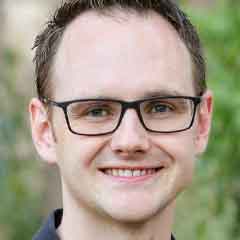
Too little respiratory effort can cause diaphragm atrophy in mechanically ventilated patients. Too much respiratory effort can injure the diaphragm and potentially lead to lung injury despite the set inspiratory pressures being relatively low. This presentation will discuss methods to assess respiratory effort utilizing esophageal manometry and ventilator maneuvers that do not require esophageal manometry.
11:25 a.m.–12:00 p.m. | Canal AB | Sleep
2023 Therapeutic Options for OSA, CSA, Insomnia
Jessica Schweller, MS, APRN-CNP, RRT, RRT-SDS
Show description

There has been a significant increase in the therapeutic options for patients with various types of sleep disorders. Newer therapies for OSA and CSA (e.g., nasal positive pressure devices, oral appliances, nerve stimulators, drug therapy) are now available. In addition, newer therapeutic options (e.g., drug therapy) are also available for patients with narcolepsy and insomnia. The RT (in both the sleep lab and hospital settings) will likely encounter these therapies while caring for patients.
12:00 p.m.–1:55 p.m. | Bayou AB | General
Open Forum Poster Discussion #9: Oxygen Therapy
Show description
Researchers present the results of their work. Authors briefly present their findings and engage in an open discussion with the attendees.
Supported by an unrestricted educational grant from
12:00 p.m.–1:55 p.m. | Bayou CD | General
Open Forum Poster Discussion #10: Mechanical Ventilation
Show description
Researchers present the results of their work. Authors briefly present their findings and engage in an open discussion with the attendees.
Supported by an unrestricted educational grant from
12:05 p.m.–12:35 p.m. | Delta Ballroom C | General
Post Acute Care Section Meeting
Timothy Buckley, MSc, RRT, FAARC
Show description
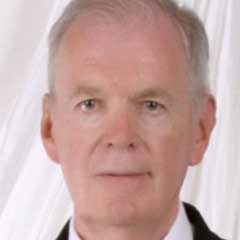
Section members meet to determine their needs and priorities, as well as how to use AARC resources to accomplish them. All Congress attendees, including section non-members, are invited to attend and participate.
1:15 p.m.–1:45 p.m. | Canal AB | General
Sleep Section Meeting
Amanda Leightner, RRT, RRT-SDS, RPSGT
Show description

Section members meet to determine their needs and priorities, as well as how to use AARC resources to accomplish them. All Congress attendees, including section non-members, are invited to attend and participate.
1:15 p.m.–1:45 p.m. | Delta Ballroom D | General
Neonatal-Pediatrics Section Meeting
Emilee Lamorena, MSc, RRT, RRT-NPS
Show description

Section members meet to determine their needs and priorities, as well as how to use AARC resources to accomplish them. All Congress attendees, including section non-members, are invited to attend and participate.
1:15 p.m.–1:45 p.m. | Washington B | General
Respiratory Diagnostic Section Meeting
Ralph Stumbo, RRT, CPFT, FAARC
Show description

Section members meet to determine their needs and priorities, as well as how to use AARC resources to accomplish them. All Congress attendees, including section non-members, are invited to attend and participate.
2:00 p.m.–2:50 p.m. | Delta Ballroom A | General
3rd Robert M. Kacmarek Scientific Memorial Lecture
Ventilator Associated Pneumonia, COVID-19, and the Path Forward
Michael Klompas, MD, MPH
Show description

This Kacmarek lecture will present the current state of the art regarding the ventilator-associated pneumonia (VAP) and theventilator-associated event ( VAE) definitions. The speaker will discuss the impact of COVID-19 on VAP and the VAE framework moving forward. VAE definitions have perplexed respiratory therapists and other health care professionals with the relationship to VAP. This talk will demystify this relationship and the definitions and provide an evidence-based review of VAP prevention.
3:00 p.m.–3:35 p.m. | Delta Ballroom B | Adult Acute Care
The 5 Most Important Things I Learned in Over 50 Years as an RT
Dean Hess, PhD, RRT, FAARC
Show description
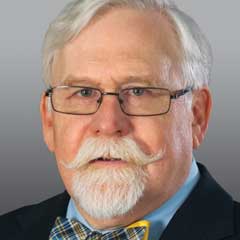
The profession has changed dramatically over the past 50 years. This presenter has witnessed it all. The five most important things learned will be presented. “Those who cannot remember the past are condemned to repeat it.”– George Santayana, The Life of Reason, 1905.
3:00 p.m.–3:35 p.m. | Washington B | Post Acute Care
Post-ICU Syndrome, Long-COVID, and the Patient Experience
James Jackson, PsyD
Show description

Post-intensive care syndrome results in a myriad of symptoms and problems that have to be addressed by a multiprofessional team. Long-COVID represents a particularly difficult syndrome, a variant of post-ICU syndrome that impacts patients with both severe and mild primary disease. Recognition of the problem, empathy for the patients, and novel medical care can help reduce the burden of Long-COVID.
3:00 p.m.–3:35 p.m. | Canal AB | Ethics
Ethics and the Respiratory Therapist
Stephanie Williams, BS, RRT
Show description

As medical professionals, respiratory therapists are held to a high ethical standard. You may think you know the right thing to do in a variety of situations, but how do those standards play out in real life? This lecture will explore the code of ethics and examine real-world events and the decisions that were made—both positive and negative.
3:00 p.m.–4:20 p.m.
Symposium
(De)Implementation Science: How to Stop Standards of Care not Supported by Evidence
3:00 p.m.–3:35 p.m. | Delta Ballroom C | Leadership & Management
(De)Implementation Science—Wait, What?
Amanda Nickel, MSc, RRT, RRT-NPS, RRT-ACCS
Show description
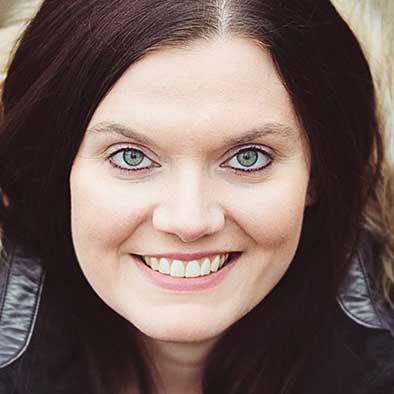
We often implement new processes, policies, and procedures into a clinician’s workflow. However, it is important to realize the concept of stopping inefficient and ineffective processes is arguably as important as implementing new evidence-based therapies. The science of (de)implementation provides a standardized framework for (de)implementing age- old therapies and workflows that are no longer good practice or based in evidence.
3:45 p.m.–4:20 p.m. | Delta Ballroom C | Leadership & Management
(De)Implementation in Respiratory Care—Options Ripe for Trial
Kellianne Fleming, MSc, RRT, RRT-NPS, RRT-ACCS
Show description

There is little evidence to support many current standard therapies for respiratory disorders. While evidence is needed to implement new therapies, the lack of evidence can be used to (de)implement mainstay therapies that do not provide clinical benefit to the patient. Reducing the inefficiencies in standard RT practice opens doors leading to change, resulting in value-added care for the patient. This lecture will provide practical examples of therapies ripe for (de)implementation trials to reduce or eliminate ineffective respiratory therapies.
3:00 p.m.–5:05 p.m.
Symposium
Alternative Technologies to Optimize Ventilation in the Neonatal and Pediatric ICU
3:00 p.m.–3:35 p.m. | Delta Ballroom D | Neonatal/Pediatrics
Negative Pressure Ventilation
Omar Alibrahim, MD, FAAP
Show description

Early mechanical ventilation was delivered via negative pressure ventilation during the polio epidemic of the 1950s. Early systems such as the iron lung were bulky, complicated, and limited patient mobility. Newer systems to provide negative pressure ventilation are smaller and have been used clinically in ICUs with some success. This lecture will cover the physiologic rationale for negative pressure ventilation, patient populations who may benefit, and the evidence supporting its use.
3:45 p.m.–4:20 p.m. | Delta Ballroom D | Neonatal/Pediatrics
Regional Distribution of Ventilation Using Electrical Impedance Tomography
Brian Walsh, PhD, RRT, RRT-NPS, FAARC
Show description
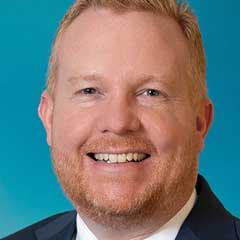
Electrical Impedance Tomography (EIT) is a non-invasive, non-radiation imaging technology that can provide valuable information regarding regional distribution of ventilation. This functional imaging can determine therapeutic goals of mechanical ventilation. The attendees will be provided with the current benefits and limitations of this technology in the neonatal and pediatric intensive care space. The presenter will also provide the audience with current research and possible advancements in care that EIT may provide.
4:30 p.m.–5:05 p.m. | Delta Ballroom D | Neonatal/Pediatrics
Advanced Lung Mechanics using Esophageal Manometry
Rob DiBlasi, BSRT, RRT, RRT-NPS, FAARC
Show description

Managing critically ill pediatric patients on noninvasive and invasive support in the ICU setting is technically challenging. There is a need for more available clinical monitoring options to help guide the management of these complex patients. Esophageal (Pes) monitoring is a powerful tool that estimates the transpulmonary pressure to provide physiologic insight into patient/ventilator interactions and response to different inhaled therapies. This lecture will review the theory of Pes monitoring and present clinical cases where this monitoring is useful for optimizing support in children with complex lung diseases.
3:00 p.m.–5:05 p.m.
Symposium
New Professionals Symposium
3:00 p.m.–3:35 p.m. | Presidential A | Students
Success on the Therapist Multiple Choice Examination
William Galvin, MSED, RRT, CPFT, AE-C, FAARC
Show description
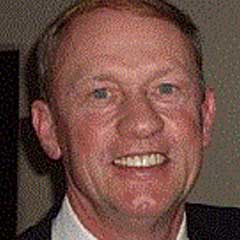
The presentation will address the factors that make for success in the examination process. It will cover preparatory issues and what you will experience onsite as well as test-taking strategies and techniques for the NBRC Therapist Multiple Choice Examination (TMC).
3:45 p.m.–4:20 p.m. | Presidential A | Students
Success on the Clinical Simulation Examination
William Galvin, MSED, RRT, CPFT, AE-C, FAARC
Show description

The presentation will serve as a sequel to the previous one and will address the factors that make for success on the Clinical Simulation Examination. It will cover such issues as exam content, structure, and unique strategies for progressing through a branching logic type of exam. It will also highlight any future changes in policy.
4:30 p.m.–5:05 p.m. | Presidential A | Students
Transitioning from Student to Professional
Dana Evans, MHA, RRT, RRT-NPS, FACHE, FAARC
Show description
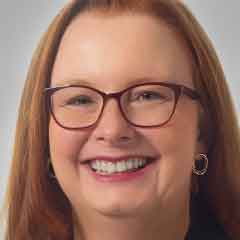
This presentation will focus on preparing the respiratory care student to transition into professional life as a respiratory therapist. The presenter will discuss demonstrating professionalism in student environments (clinical rotations, professional meetings, etc.), applying and interviewing for a job, and maintaining professionalism after graduation.
3:10 p.m.–5:05 p.m. | Bayou AB | General
Open Forum Poster Walk Rounds #3
Show description
Researchers present the results of their work. Authors briefly present their findings and engage in an open discussion with the attendees.
Supported by an unrestricted educational grant from
3:10 p.m.–5:05 p.m. | Bayou CD | General
Open Forum Poster Walk Rounds #4
Show description
Researchers present the results of their work. Authors briefly present their findings and engage in an open discussion with the attendees.
Supported by an unrestricted educational grant from
3:45 p.m.–4:20 p.m. | Delta Ballroom B | Adult Acute Care
Addressing Hispanic Disparities in Asthma Education
Angel Melendez, MSRC, RRT, RRT-NPS
Show description


Asthma is a health burden experienced worldwide. In the United States the burden of asthma is disproportionately borne by low-income communities and people of color. The Latinx population suffers an increased incidence of asthma and asthma severity. This is compounded by a language barrier and failure of health care systems to provide asthma education in Spanish. Low income, predisposition to severe asthma, and the language barrier, conspire to place Latinx patients at risk. This talk will describe asthma education for Latinx communities and initiatives to improve asthma education in these communities. The speaker will provide evidence from the literature and his own experiences in asthma education in border communities.
3:45 p.m.–4:20 p.m. | Washington B | Post Acute Care
Oxygen Therapy: Transitioning from the Hospital to the Home
Michael Hess, MPH, RRT, RPFT
Show description
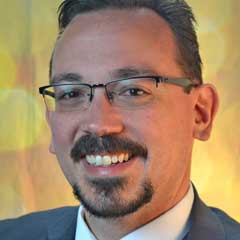
Oxygen administration in acute care settings is often transitioned to the home for many chronic lung patients. The evidence reviewed included the appropriate oxygen device(s) needed in the home, environmental home evaluations, patient and caregiver education before and after transitioning, and outcomes desired by patients for care, comfort, quality of life, and activities outside the home while using oxygen. The literature review and evidence will be discussed, with an eye toward what is needed to ensure a smooth transition.
3:45 p.m.–4:20 p.m. | Canal AB | Patient Safety
Medical Errors: Why Do They Occur and What Can RTs Do to Reduce Risk?
Kevin McQueen, MHA, RRT, RRT-ACCS, CPPS, FAARC
Show description

The presentation will provide valuable insight into why medical errors occur and the actions that RT leaders and frontline RTs can take to reduce the risks of patient harm and improve patient safety. The discussion will include human factors, system/process designs, and behaviors that impact errors.
4:30 p.m.–5:05 p.m. | Delta Ballroom B | Adult Acute Care
Patient Self-Induced Lung Injury (P-SILI): Recognition and Prevention
Christopher Piccuito, MSEd, RRT, RRT-NPS, RRT-ACCS
Show description
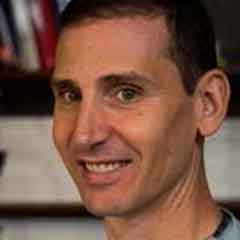

Patient self-induced lung injury (P-SILI) is a newer concept often overlooked by the medical team. This presentation will provide an overview of P-SILI and strategies that an RT can use to detect and/or prevent P-SILI in spontaneously breathing and mechanically ventilated patients.
4:30 p.m.–5:05 p.m. | Washington B | Post Acute Care
RTs Adding Value in the Post-Acute Care Setting
Timothy Buckley, MSc, RRT, FAARC
Show description

RTs are invaluable resources for the care and management of patients in the post-acute home care settings. Caring for patients with a chronic tracheostomy (both adults and children) is one way RTs can add such value. The needs of such patients (including the appropriate use of equipment) must be considered in the evaluation and management process.
4:30 p.m.–5:05 p.m. | Delta Ballroom C | Leadership & Management
The Role of the Respiratory Care Medical Director in Supporting RC Research
Ariel Berlinski, MD
Show description
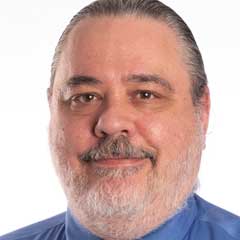
Respiratory care departments have traditionally excelled in their clinical performance but have lacked robust research programs. The latter is crucial to advance clinical knowledge and elevate the profession. Institutional support and strategic partnership with the medical director will help achieve those goals. The speaker will discuss the importance of partnership between RRTs and MDs in advancing RC research.
4:30 p.m.–5:05 p.m. | Canal AB | Patient Safety
Secondary Victims: An Ethical Dilemma
Martin Koehlein, MHA, RRT, RRT-ACCS, CPPS
Show description
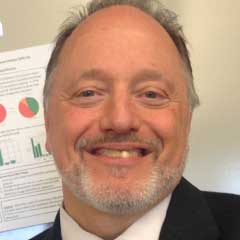
Given the recent COVID pandemic, health care workers have been under several stressors such as low staff and high acuity and are subject to increased burnout. Secondary Victim Syndrome is not new; however, recognition of the signs and symptoms and mitigation techniques are needed now more than ever. This presentation uses real case scenarios to take us through the journey of those that were lost to this syndrome. Come learn how to make a difference.
6:00 p.m.–9:00 p.m. | Delta Ballroom A
Sputum Bowl Finals
Show description
2023 Sputum Bowl Finals. Doors open at 5:15 p.m.

There are no sessions that match your display preferences.

